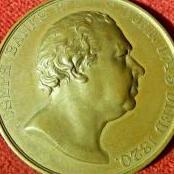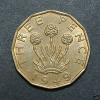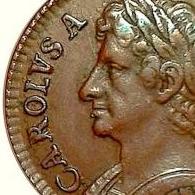Leaderboard
Popular Content
Showing content with the highest reputation on 01/22/2021 in all areas
-
A MAN'S GUIDE TO TOOLS DRILL PRESS: A tall upright machine useful for suddenly snatching flat metal bar stock out of your hands so that it smacks you in the chest and flings your beer across the room, denting the freshly-painted project which you had carefully set in the corner where nothing could get to it. WIRE WHEEL: Cleans paint off bolts and then throws them somewhere under the workbench with the speed of light. Also removes fingerprints and hard-earned calluses from fingers in about the time it takes you to say, 'Oh damn' CIRCULAR SAW: A portable cutting tool used to make studs too short. PLIERS: Used to round off bolt heads. Sometimes used in the creation of blood-blisters BELT SANDER: An electric sanding tool commonly used to convert minor touch-up jobs into major refinishing jobs. HACKSAW: One of a family of cutting tools built on the Ouija board principle... It transforms human energy into a crooked, unpredictable motion, and the more you attempt to influence its course, the more dismal your future becomes. VISE-GRIPS: Generally used after pliers to completely round off bolt heads. If nothing else is available, they can also be used to transfer intense welding heat to the palm of your hand. OXYACETYLENE TORCH: Used almost entirely for lighting various flammable objects in your shop on fire. Also handy for igniting the grease inside the wheel hub out of which you want to remove a bearing race. Its best use is for igniting new seat covers. TABLE SAW: A large stationary power tool commonly used to launch wood projectiles for testing wall integrity. HYDRAULIC FLOOR JACK: Used for lowering an automobile to the ground after you have installed your new brake shoes, trapping the jack handle firmly under the bumper. BAND SAW: A large stationary power saw primarily used by most shops to cut good aluminium sheet into smaller pieces that more easily fit into the trash can after you cut on the inside of the line instead of the outside edge. ENGINE HOIST: A tool for testing the maximum tensile strength of everything you forgot to disconnect. PHILLIPS SCREWDRIVER: Normally used to stab the vacuum seals under lids or for opening old-style paper-and-tin oil cans and splashing oil on your shirt; but can also be used, as the name implies, to strip out Phillips screw heads. FLATHEAD SCREWDRIVER: A tool for opening paint cans. Sometimes used to convert common slotted screws into non-removable screws and butchering your palms. PRY BAR: A tool used to crumple the metal surrounding that clip or bracket you needed to remove in order to replace a 50-cent part. HOSE CUTTER: A tool used to make hoses too short. HAMMER: Originally employed as a weapon of war, the hammer nowadays is used as a kind of divining rod to locate the most expensive parts adjacent to the object we are trying to hit. UTILITY KNIFE: Used to open and slice through the contents of cardboard cartons delivered to your front door; works particularly well on contents such as seats, vinyl records, liquids in plastic bottles, collector magazines, refund checks, and rubber or plastic parts. Especially useful for slicing work clothes, but only while in use. SON OF A BITCH TOOL: Any handy tool that you grab and throw across the garage while yelling 'Son of a bitch' at the top of your lungs. It is also, most often, the next tool that you will need, and at times must be retrieved from across the road.6 points
-
I didn't know much about copper pennies until I started collecting them last year. You should learn, you don't know what you're missing. Very enjoyable and fulfilling experience for me, which lightened the whole miserable covid situation considerably. In its own way, completely different from collecting bronze pennies.2 points
-
2 points
-
2 points
-
I've just read a very interesting article in the March 1991 Coin Monthly about varieties of British Copper pennies and the author speculates, quite intelligently I thought, about the possibility of both an 1858/2 and and 1858/3 existing in parallel. The conventional thinking is that the overstrikes in question are either one or the other, not both - or as far as I can see, not both. Whilst accepting that the 1858/3 exists, the author also refers to a photograph in the May 1970 Coin Monthly, which I have to admit, I completely overlooked when first reading the 1970 mags. Looking at the May 1970 article in question, which is under "Reader's Rarities" at page 139, a Mr Shirley from Chorlton, Manchester, states: "I have recently acquired an 1858 overstrike penny. The penny is in extremely fine condition with faint traces of lustre and appears to be an unrecorded variety ie: an 1858 over 2 penny. The article continues - "The Royal Mint verified that this coin is an 1858 penny with the last figure of the date struck over a 2 and in a further letter to T. Shirley, (The Royal Mint) stated:- "It is true that no copper pennies dated 1852 are known, and numismatists have deduced, reasonably enough, that all the pennies struck in 1852 bore the date 1851. It does not, however, follow from this that dies dates 1852 were never made, and if such unused dies existed it would have been natural to use them up by altering the date. It is also quite possible that an engraver who had punched a 2 by mistake proceeded to punch an 8 on top of it. Either explanation would fit your coin and one or two similar pieces which we have examined" The above tends to vindicate Michael Gouby's theory, but the additional existence of an 8/3 is a definite strong possibility. Unfortunately there wasn't an actual copy of the Royal Mint's letter, as there often is in the old Coin Monthlies.2 points
-
It's the Association of Short Circuit Testing Authorities https://www.intertek.com/marks/asta/.2 points
-
The Dorian & Magens shillings came close, but the nearest an official strike came to complete melting was probably the 1945 silver 3d. However, that was related to the need to pay off debts and [presumably] the cessation of silver coinage was proposed by the time they were struck. Any wholesale withdrawal of coinage is usually politically motivated or for financial reasons. A copper penny doesn't fall into either camp.2 points
-
I know very little about copper pennies, in fact, what I do know about them could be written in 48-point type on Donald Trump's brain, but you've all managed to make this a damn good read. Thanks Guys, and well done!1 point
-
"Restrike" requires the coin to be officially reissued. My opinion is that the term cannot be used for a fake coin. He should have called the coin "fake" or "reproduction" in my view.1 point
-
Yes, caveat emptor. Nothing random going on here, and the intention is clear, the fakes have been bought with the intention of selling on at a profit to people who shouldn't be allowed out unsupervised.1 point
-
1 point
-
They've got an Edward VIII 1937 £5 coming up in a month or two - might go for a bit.1 point
-
The 236k comes from Montagu (1885) who states:- Well yes, but the overwhelming consensus is that they bore the date 1851, from 1851 dies. For me that kind of throws into doubt the 1852 die having ever been produced, else why wouldn't it have been used for these additional 263k pennies? Although there may be some other convincing logic which lends stronger support, other than the apparent 1858/2 penny, to the suggestion that an 1852 die was produced. Incidentally 263,424 appears to be the correct mintage as it equates exactly with the quoted value of £1097-12-0. As far as the mintage for 1851 is concerned, not sure where Wikipedia's figure of 432,224 is from, but the mintage I have is 268,800 (co-incidentally exactly the same as the figure for 1849). If you add together the official 1851 mintage and the presumed additional 1851 mintage produced in 1852, you get 532,224 - 100k more than the Wikipedia total you quote. Maybe a calculation error on the author's part. Neither Montagu nor Bramah speculate on the existence of an 1852 die.1 point






